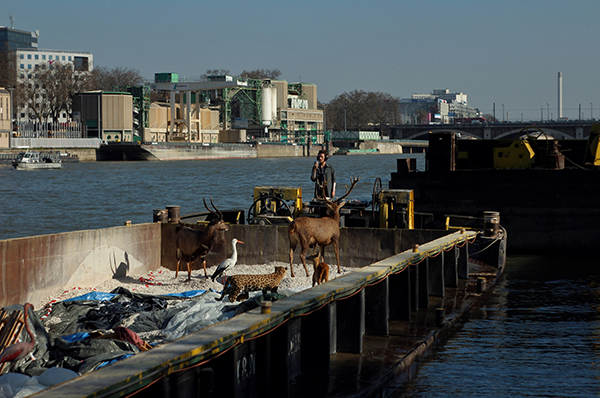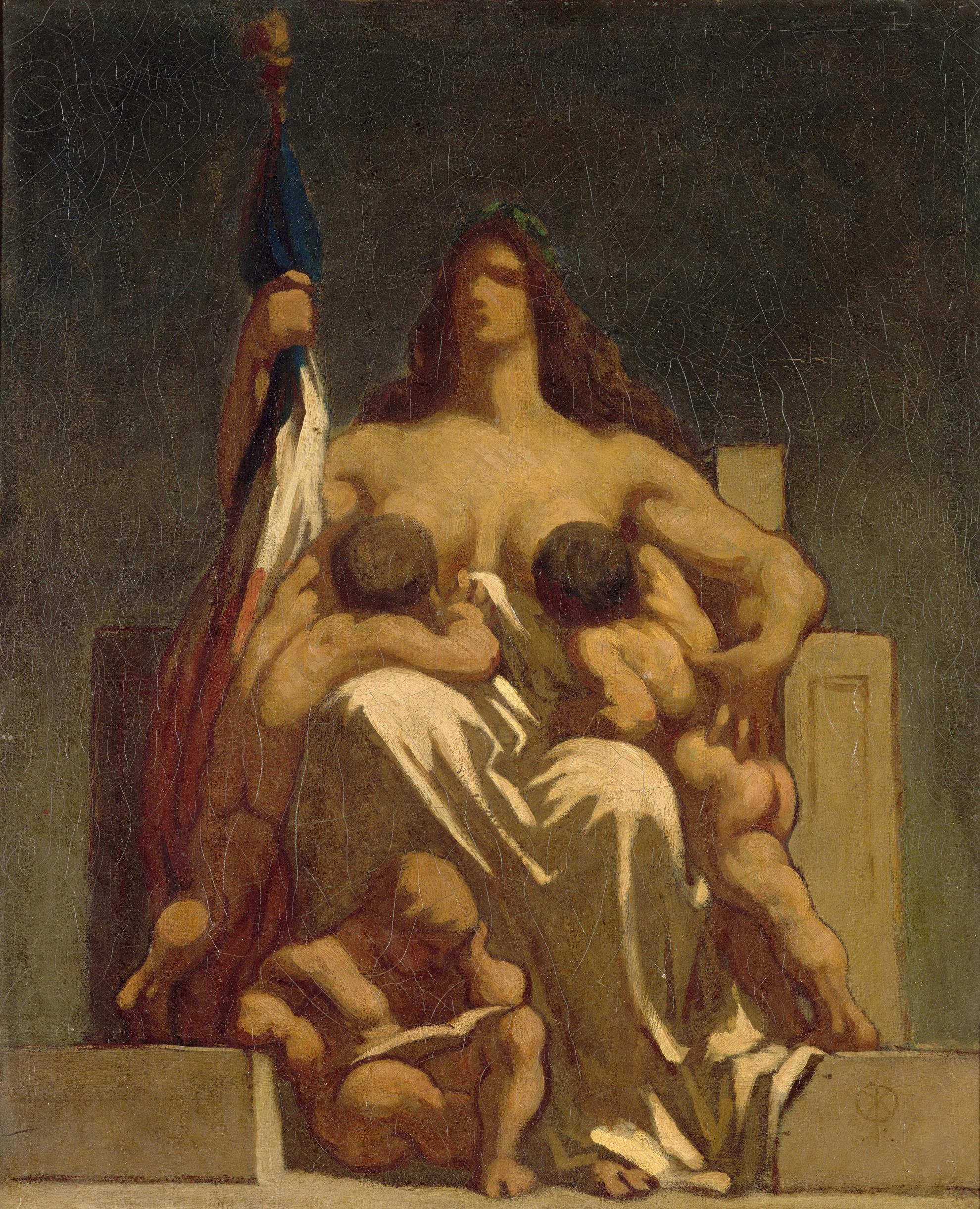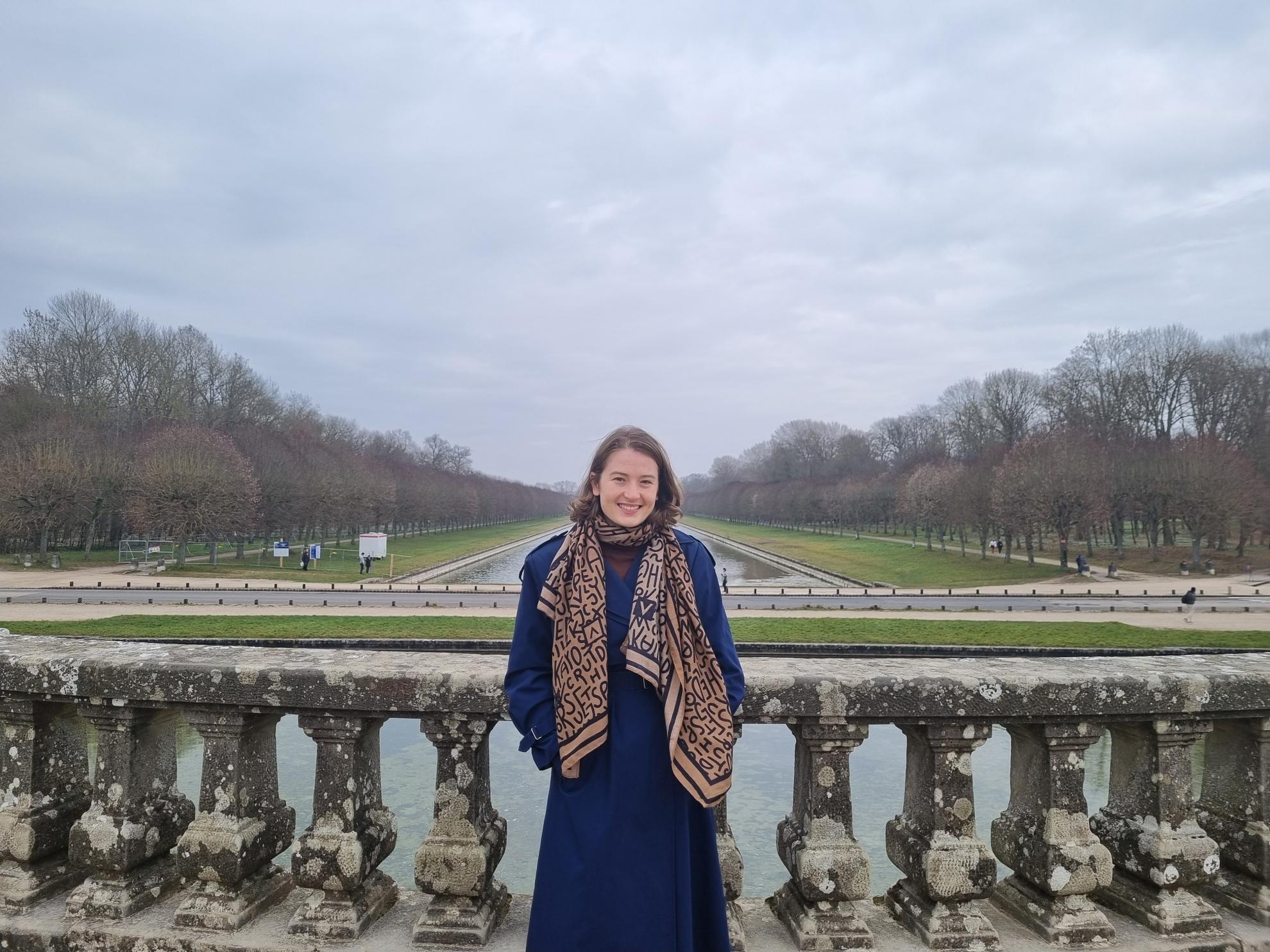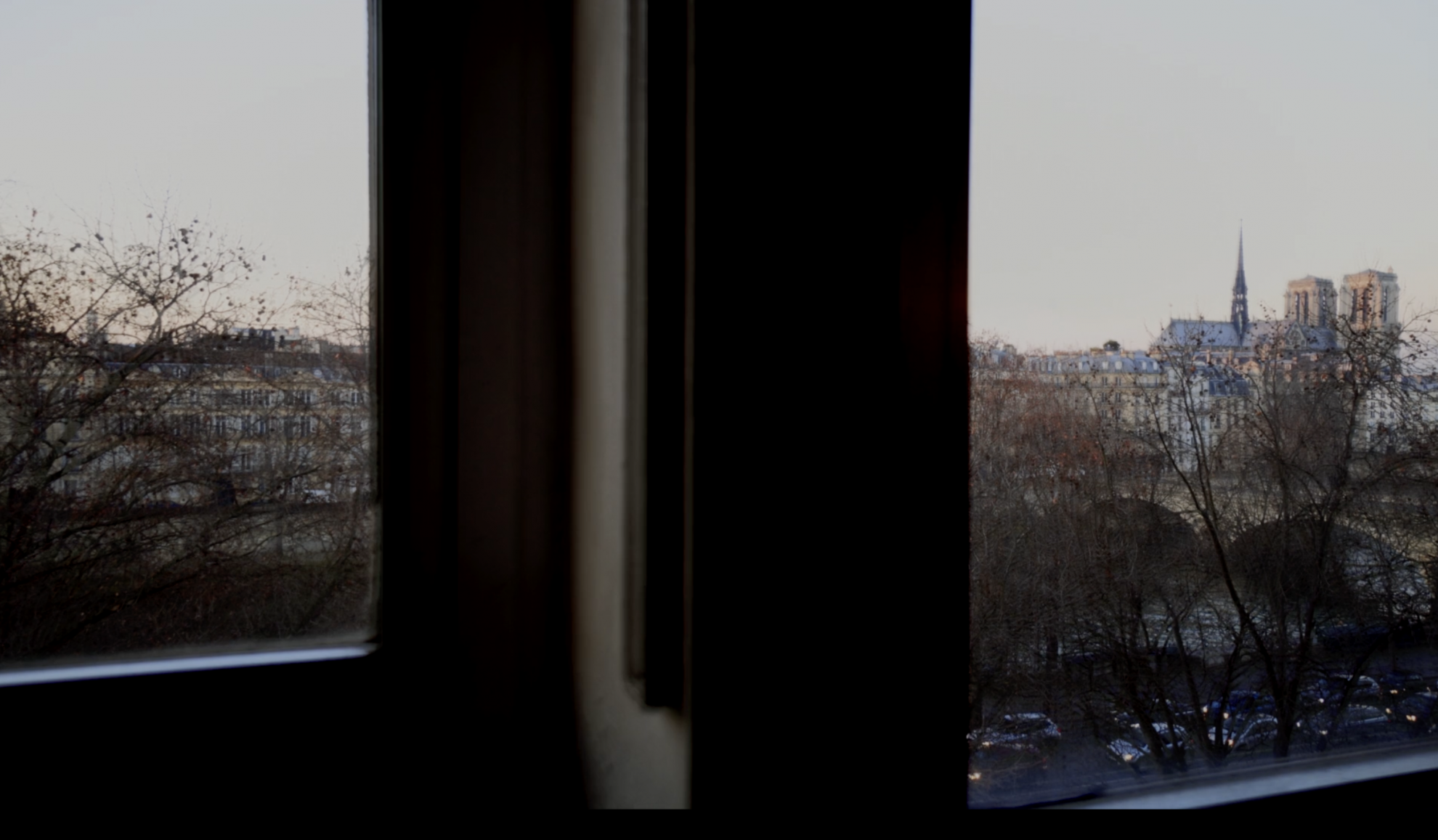
Each year, the Power Institute awards a set of three-month art residencies at the Cité Internationale des Arts in Paris.
Each year, the Power Institute offers four Fellowships to artists, scholars and other art workers to spend three months at our studio at the Cité des Arts Internationale in Paris. Since 1997, more than seventy residencies have been awarded.
The Fellowship covers the rental fee for the studio for 3 months. Residency winners will also receive $6,000 towards travel and living expenses.
Applications for Fellowships open in April each year, and close in July.
The Fellowships are made possible thanks to the generous support of Nicholas Curtis AM and Angela Curtis.
Learn about our 2024 Fellows
Learn about our 2023 Fellows
Categories
Applicants can apply for one of three categories:
- A) Artists / craftspeople.
- B) Art writers, art curators, art historians or art administrators.
- C) University of Sydney staff-members or PhD candidates.
Selection Criteria
The Fellowships are awarded by a Committee chaired by the Director of the Power Institute. The Committee will award four Fellowships, with at least one Fellow from each of the three categories outlined above.
The Committee will award Fellowships with strict regard to the following criteria:
- The strength of the applicant's project.
- The benefit of pursuing this project via a Residency in Paris.
- The potential for the Residency to further the applicant's professional development at this stage of their career.
Eligibility Requirements
Applicants must be an Australian citizen or Permanent Resident.
Applicants cannot have previously received a residency at the Cité Internationale des Arts (either through the Power Institute or another organisation).
Eligibility requirements for Category C: "University of Sydney staff-members or PhD candidates":
- An eligible "PhD candidate" is someone who is enrolled as a PhD candidate at the application closing date.
- An eligible "staff-member" is someone who, within 2 months of the application closing date, has been or will be employed by the University as a Professional or Academic staff-member, including those on casual, temporary or fixed term appointments. This does not include those engaged under other forms of contract.
The ability to speak French is an advantage, but is not essential.
Fellowship Conditions
- The Fellowship covers the rental fee for a studio at the Cité des Arts Internationale in Paris for 3 months in 2025, in one of the following periods: January - March, April - June, July - September, October - December.
- Fellows will be required to pay a bond deposit (refundable) and utility costs for the duration of their stay.
- $6,000 (AUD) will be provided to Fellows to contribute to travel and living expenses. Payment will be made approximately 6 weeks prior to travel. Successful applicants will need to have sufficient funds if they would like to book air tickets well in advance of commencement of residency.
- Fellows must submit a report detailing their outcomes at the end of their residency.
About the Cité Internationale des Arts
The Cité Internationale des Arts is a non-profit international arts centre formed in Paris under joint government and private sponsorship in September 1957. The first building of the centre was opened in July 1965 and consisted of 135 studio apartments. This has now expanded to 300 studios in two buildings. The aim of the scheme is to open the way for artists in many fields and from many countries to gather together in Paris, to work, to discuss and exchange ideas, to contribute to each other’s development and to absorb all that Paris has to offer as one of the world’s great centres of artistic expression.
The Cité is located at 18, rue de l’Hotel de Ville, 75180 Paris Cedex 04, which is on the Right Bank of the Seine opposite the Ile St Louis, in an area known as ‘Le Marais’. Each studio is designed for the special use of a painter, sculptor, engineer, architect, musician, dancer, choreographer or filmmaker. The complex includes a meeting room, a rehearsal room for musicians, a television room, two large exhibition rooms and a concert hall which seats 150 people.
The applicant selected for a given studio will pay no rent during their occupancy. However, a monthly operational charge is payable and must be paid in Euros at the beginning of each month, which covers electricity, heating and running costs of the studio. The monthly services charge will depend on the size of the studio. Please note the payment is subject to change annually, and it is payable to the Cité. A refundable deposit equivalent to one month’s charge is also payable to the Cité prior to your residency commencement date. Each artist is entitled to a studio with bedroom, bath, and kitchenette. A spouse may accompany the applicant, but the studios are not sufficiently large to accommodate children adequately. Small families consisting of two adults and one small child, however, are usually admitted. There is an additional fee for extra guests.
Those studios constructed have been sold on an individual basis either to foreign governments or private patrons of the arts. The University of Sydney purchased the studio under the J.W. Power Bequest.Access to primary research materials
In 2016, one of the four recipients was Cassi Plate, then developing art writer and curator who was researching a Paris-based Czech artist Karel Kupka, a little-known collector of important Aboriginal bark paintings and sculptures. Being in Australia limited the scope of Plate’s research but the residency in Paris gave her the opportunity to finally and fully research beyond the Australian archives.
Access to archives and primary research materials was also crucial for researcher Rachelle Johnston, who was at the Cité in 2010 to research French garden design at Versailles and the use of the gardens in political performances. “I could not have achieved what I did without the Cité residency,” she says. “I used my Cité residency to visit the archives regularly to get primary materials and to take multiple trips to Versailles. When working on a project that is about spatial relations, it is important to immerse yourself in that space. The residency enabled me to visit Versailles (and Vaux) weekly over a three-month period and experience the change in season as well.”
Artist Elizabeth Coats also benefited from access to the primary research materials when she was at Cité in 2014 to research artists who were involved in experimentation and the dissemination of ideas connected to the emergence of modernism:
“Living for three months in Paris gave me direct and regular contact with paintings by individual artists associated with the development of modernism internationally,” says Coats. “To study material substance and spatial colour in painting requires viewing paintings in situ. […] To develop my understanding of the spread of early modernist experiments with colour abstraction would necessarily take into account environmental factors. For instance, how familiarity with colour activity in local light conditions impacts on construction in countries influenced by French early modernist innovations.”
Time spent in Paris also gave Coats a chance to explore the range of artist supplies shops, familiarise herself with their range of pigments and purchase Chinese and Japanese papers not available in Australia. She also had a chance to locate books on European contemporary artists, not easily available in Australia, and “frequently walk along the Quais of the Left Bank, to look into galleries specialising late 19th and early 20th century modernist painting, knowing that [she] would see works that were unpublished and otherwise inaccessible.”


An opportunity for international collaboration
The vibrant culture of Cité itself and the opportunity to meet other scholars and artists and be surrounded by their enthusiasm was in itself stimulating. Ben Ferris, our most recent, 2017 resident recalls, with excitement, many art events taking place within the grounds of the Cité itself. For Ferris, who went to Paris to develop his video project on the mythological figure of Orpheus, the artistic vibe of the Cité resulted in creative collaborations with some of the other artists-in-residence. “The Cité provides an incredibly social environment where you meet artists from all around the world. I ended up collaborating with a Russian film production designer and a Russian costume designer, who were both residents of the Cité like me,” says Ferris, whose collaborations have continued since his return.
Like Ferris, Elizabeth Coats remembers the vibrancy and a stimulative environment of Cité. “Spontaneous gatherings of artists at the Cité occurred every Thursday evening; talks and music concerts were held every Monday evening, and the Cite acted as a hub for the communication of contemporary art events all over Paris,” she recalls.
For Cassi Plate, the key benefit of these interactions was receiving the peer feedback on her work and insightful suggestions that kindled her inspiration. “Being in the Cité meant ongoing discussions with both writers and artists, as well as seeing and hearing other people’s work, and being the beneficiary of their suggestions and feedback. It was a very stimulating environment,” she says.
The 2007 resident, Lila Afiouni, has similar memories. “The main benefit,“ she recalls, “was being able to meet so many other artists from different nationalities and countries that were also residing at the Cité. The diversity of the Cité was very surprising. I met film producers, musicians, writers, photographers, artists and an array of people involved in the arts that were either undertaking the residency or associates of the residents. First-hand experience of artists in the process of making their work was an invaluable insight into how other artist’s approach their work. Discovering how other artists survived and made work was a valuable lesson as well, as I was at the beginning of my art career and trying to establish a working routine that fit me. The benefits of the residency in Paris far outweighed any other opportunity I had been afforded thus far.”
Afiouni was also inspired by the artistic freedom felt in the air of Paris. “Exchanges with non-Australian artists were eye-opening. It seemed that their opportunities spread far and wide and their outsider status worked to their advantage, this is something I learned much from. I was taken aback at how adventurous artists in Paris were, they really tested the boundaries and this very sensibility pushed me forward into braver territory. I felt a breakthrough in my work and attitude because many other artists were breaking barriers and giving me permission to do so also.”
The allure of the city and proximity to cultural hubs
Paris has of course played a role in the residents’ experience, as well. The allure of the city took hold of Ben Ferris who ended up incorporating the river Seine as one of the key characters in his project. “I ended up writing the project specifically for locations in Paris, including the river Seine. The concept for the project changed significantly in this period ,” says Ferris who went to Cité with a vague idea for his project and used his time there to develop the initial ideas further and shoot a video work that is currently in post-production and will be on show in Sydney later this year.
Like Ferris, artists James and Eleanor Avery, who were at Cite in 2011 to research and work towards their two upcoming exhibitions (a solo exhibition in London at Schwartz Gallery in September 2011 and a group exhibition at 3 + 1 Gallery in Lisbon, Portugal in November 2011), allowed their project to change and reshape as the stimulus of the time spent at the Cité seeped in: “When we arrived in Paris our plans understandably changed as we embarked upon an intense period of research, visiting museums and galleries on a daily basis. The more we were exposed to the more we developed our original plans.”
James and Eleanor recognise that one of the biggest influences on their project was the city itself, specifically the urban design of Baron Haussmann. “The layout of the city, the wide boulevards in contrast with the cramped medieval quarter contributed to an all pervading sense of control and surprise. We experienced a unique view of the urban population, a layered society that has freedom of movement in a tourist destination yet is still tightly controlled. We found the mechanics of the urban population, the street culture, the order and the chaos all made a major contribution to the development of our original proposal whilst at the Cité. We have continued this research interest and preoccupation with chaotic yet ordered spaces and developed it through a series of sculptures and exhibitions held in the following years.”
Lila Afiouni also remembers the city of Paris having “the greatest influence” on her work. “I had no idea that everything about Paris would weld itself into the fabric of my everyday life. The architecture and landscape made a profound influence on my work. Years later the detail of houses and buildings would influence my abstract paintings.”
Both Afiouni and Cassi Plate used the opportunity of being in Paris to visit many of the local galleries and museums. “I was able to extend my curatorial knowledge through regular visits to many of the local museums and galleries,” recalls Plate, while Afiouni recalls being exposed to the many artworks of Picasso, Matisse and Braque. “As I was attending the Picasso Musee and the Pompidou Centre often, I felt as though I was living with these masters’ works. There was much time to examine and pontificate over them. After a while, I was able to make distinctions between Picasso’s ceramic works, the early Arab ceramics and my own works—it was an important experience.”
And while Paris itself was rewarding and stimulating enough, many of the residents also used an opportunity of having a base there to travel to neighbouring cities and countries that were (or ended up being) relevant to their research. Cassi Plate, for instance, extended her research from Paris to Basel and Marseilles where some of Kupka’s archives and the works he collected are also based. James and Eleanor Avery took the opportunity of being in Paris to not only research areas originally intended but to expand sideways and visit venues and institutions that did not appear in their original proposal. “The proximity of various sites of interest within a day’s train ride from Paris was a great opportunity,” they say. “A day trip to Compiégne to research an undocumented Sebastiano del Piombo was hugely rewarding. A day trip to Chartre to explore Chartre Cathedral and the medieval city was relevant to our research. A long weekend in Normandy where we explored the WWII Atlantic Wall concrete defence systems was hugely interesting, along with a visit to the Bayeux tapestry.”


Time to think and create
In addition to the benefits of being at the Cité and in and around Paris, for all the recipients the most important aspect was the uninterrupted block of time for research, thinking and writing. “The block of time at the Cité allowed me to consolidate my work and create more culturally complex projects,” said Cassi Plate, who is also, as she says “confident that now, having been an official resident at the Cité, [she] can apply directly to the Cité to stay there should [she] need time in Paris for other project-related work.”
Having a block of time dedicated to study and develop work was hugely beneficial for James and Eleanor Avery, but they also highlight the benefit of having the available studio space as well. “At that time we were working towards two exhibitions—a solo show in London and a group show in Lisbon, Portugal. The Cité studio not only provided an ideal opportunity to plan large scale work but also there was sufficient space to complete a number of smaller pieces for our exhibition in Lisbon.”
Each of the recipients we spoke to acknowledged that their residency had resulted in further career development. “My work with painting has continued full time since returning to Canberra,” says Elizabeth Coats, who in 2015 received an ANU Vice-Chancellor’s College Artist Fellowship for a cross-disciplinary collaboration with a vision physiology scientist and her post-graduate students.
As a result of the Cité residency, James and Eleanor Avery staged two exhibitions in Europe to show their work, some of it completed at the Cité, but most of it, as they say, influenced by the Cité residency. “In terms of career development whilst at the Cité, we confirmed that research can underpin a whole platform of creative endeavours. On return to Australia, we have received offers and exhibition opportunities that we can attribute to our residency experience, sometimes years after the actual residency concluded. We thoroughly recommend the Cité as a centre to have access to such a rich and varied level of research opportunities that undoubtedly feed back into an artist’s career.”
Lila Afiouni is equally enthusiastic about the effect of her time in Paris on her career:
“The Cité residency gave my artistic practice credibility and a legitimacy I might not have known for years to come. It gave me the confidence to pursue other opportunities and resulted in my seeking a residency in San Francisco and securing a six month contract with the art cooperative Root Division. The Cité taught me how to network with other artists and the art community and to be bold and seek opportunities for exhibition and travel. There is also that immediate connection of meeting someone who has done a residency at the Cité. I feel that I have been part of an important tradition of Australian artists who have been to the Cité.”
Whether they were deep in the archives, spread out in the studio, or hopping between galleries, it seems that for creative professionals working at any stage of their careers in Australia, the access to primary materials, professional connections and cultural hubs is still of great value, and particularly when it is coupled with the time and space to think and create. These are the kinds of formative experiences that the Power Institute seeks to foster for academics and practitioners alike, and it’s a long-standing tradition we are thrilled to continue.






